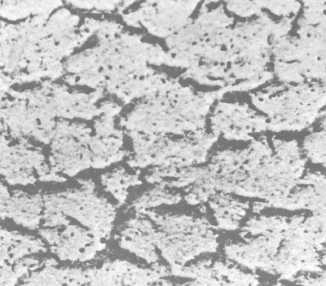breezy days. The painting method requiring the most
training is spraying. Rolling requires the least training.
PAINT FAILURES
LEARNING OBJECTIVE: Upon completing this
section, you should be able to identify the
common types of coating failures and recognize
the reasons for each.
A coating that prematurely reaches the end of its
useful life is said to have failed. Even protective coatings
properly selected and applied on well-prepared surfaces
gradually deteriorate and eventually fail. The speed of
deterioration under such conditions is less than when
improper painting procedures are earned out. Inspectors
and personnel responsible for maintenance painting must
recognize signs of deterioration to establish an effective
and efficient system of inspection and programmed
painting. Repainting at the proper time avoids the
problems resulting from painting either too soon or too
late. Applying coatings ahead of schedule is costly and
eventually results in a heavy buildup that tends to
quicken deterioration of the coating. Applying a coating
after it is scheduled results in costly surface preparation
and may be responsible for damage to the structure,
which may then require expensive repairs.
In the following sections, we’ll look at some of the more
common types of paint failures, the reasons for such
failures, methods of prevention, and cures.
SURFACE PREPARATION FAULTS
Paint failures can result from many causes. Here, we’ll
look at some of the most common caused by faults in
surface preparation.
Alligatoring
Alligatoring (fig. 8-3) refers to a coating pattern that
looks like the hide of an alligator. It is caused by uneven
expansion and contraction of the undercoat. Alligatoring
can have several causes: applying an enamel over an oil
primer; painting over bituminous paint, asphalt, pitch, or
shellac; and painting over grease or wax.
Peeling
Peeling (fig. 8-4) results from inadequate bonding of
the topcoat with the undercoat or the underlying surface.
It is nearly always caused by inadequate surface
preparation. A topcoat peels when applied to a wet, dirty,
oily or waxy, or glossy surface. All glossy surfaces must
Figure 8-3.—Alligatoring.
Figure 8-4.—Peeling.
be sanded before painting. Also, the use of incompatible
paints can cause the loss of adhesion. The stresses in the
hardening film can then cause the two coatings to
separate and the topcoat to flake and peel.
Blistering
Blistering is caused by the development of gas or liquid
pressure under the paint. Examples are shown
8-11



